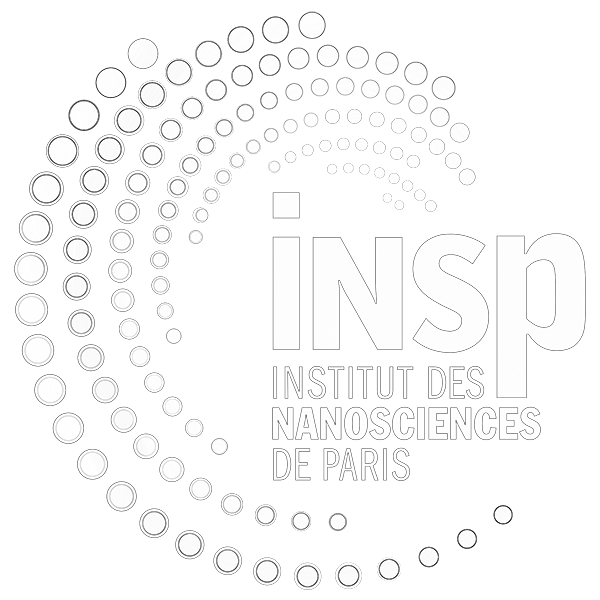Plasmonic excitation of nanoparticles for hot electron injection into AuNP/TiO2
Contact : olivier.pluchery@insp.jussieu.fr, 01 44 27 94 10
Tutelle : Sorbonne Universite, INSP, 4 place jussieu, 75005 Paris
Mots clés : Stage M2
Gratification : Oui
Page des stages de(s) l'équipe(s) : Physico-chimie et dynamique des surfaces
Description du stage
Click on « description » for full document
Keywords: gold nanoparticles, plasmonics, nanoelectronics, Atomic Force Microscopy
Due to their plasmonic properties, gold nanoparticles behave as nano-antenna that
concentrate the local electromagnetic field to nanometer scale dimensions [1]. The
localized surface plasmon resonance (LSPR) occurs in gold nanoparticles and generate
strong oscillations of the free electrons. In certain conditions some of these electrons
can be expelled out of the nanoparticles and injected into a semiconductor. This
corresponds to the recent field of research of the “hot electron physics”. One key point
for a successful injection of electrons or holes is the existence of a strong built-in
potential at the junction between the nanoparticle and the surface.
In our group we develop an approach based on advanced Atomic Force Microscopy
(AFM) techniques such as conductive AFM or KPFM (Kelvin Probe Force Microscopy)
to investigate this topic. Recently, we have demonstrated that we can measure the
Schottky barrier at the interface between a gold nanoparticle and a doped
semiconductor (Fig. 1) [2]. Moreover, we have also developed an optical microscope to
measure dark field optical hyperspectral images of single nanoparticles and correlate
the plasmonic properties with the KPFM images (Fig. 2) [3].
The present internship will focus on understanding how to measure with accuracy the
local electric field at the nanoparticle-semiconductor interface, using a KPFM following
a previous internship in 2025. In 2026, we will focus on a very promising system of gold
on TiO2 substrate. The candidate will learn how to use KPFM, how to interpret the
data, and will compare them with existing electrical models. During the internship,
the measure of the plasmonic response of these nanostructures will also be carried out
using the dark field optical hyperspectral microscope. The final goal is to prove that
the electron injection can be triggered with on optical beam and measured with KPFM.
[2] Lechaptois, L., Prado, Y. & Pluchery, O. KPFM visualisation of the Schottky barrier at the
interface between gold nanoparticles and silicon. Nanoscale 15, 7510-7516 (2023).
[3] Abadie, C., Liu, M., Prado, Y. & Pluchery, O. Hyperspectral dark-field optical microscopy correlated to atomic force microscopy
for the analysis of single plasmonic nanoparticles: tutorial. J. Opt. Soc. Am. B 41, 1678 (2024)
Techniques/methods in use: Atomic Force Microscopy, dark field optical microscopy
Applicant skills: skills for experiment, dedication and passion for understanding experimental results
Possibility for a Doctoral thesis: YES. Funding through Doctoral School ED397, after selection

